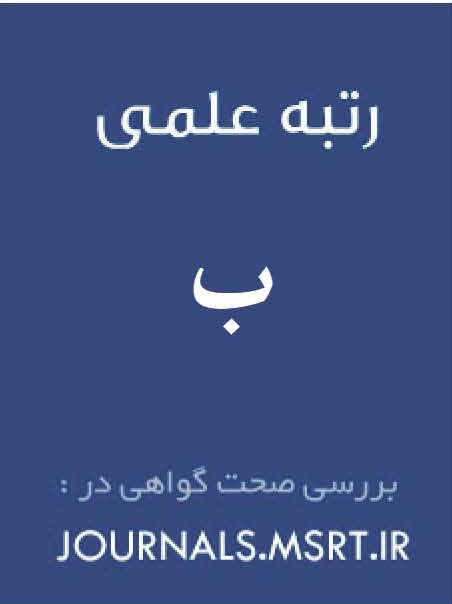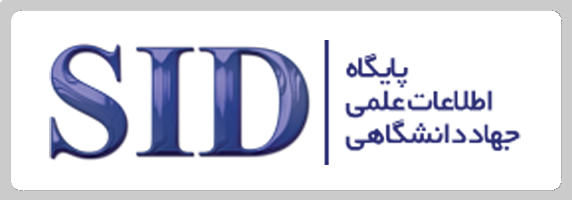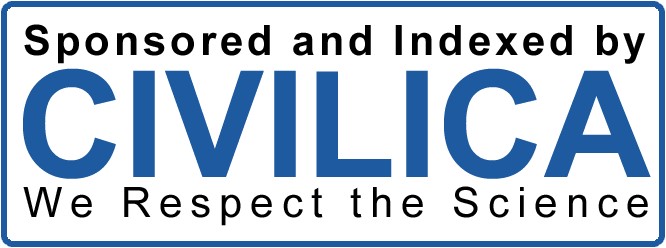Psychometric Evaluation of the Persian Version of the "Brain Fog Scale" Among Married Individuals in Rafsanjan
Keywords:
Reliability, Factor Analysis, Validity, Psychometrics, Brain FogAbstract
Objective: The present study aimed to translate and evaluate the psychometric properties of the "Brain Fog Scale" among married residents of Rafsanjan.
Methods and Materials: This was a methodological research study. The statistical population included all married individuals residing in Rafsanjan during the 2022–2023 academic year, of whom 200 were selected through convenience sampling. Initially, the original version of the scale was translated into Persian. The preliminary translations were then merged and integrated into a single version. The final Persian version was back-translated into English, and the translated version was subsequently reviewed, revised, and finalized. Content validity ratio (CVR) and content validity index (CVI), construct validity through exploratory and confirmatory factor analysis, and convergent validity were assessed. Reliability was evaluated using internal consistency by calculating Cronbach’s alpha coefficient. Data analysis was conducted using AMOS version 24, SmartPLS version 3, and SPSS version 24 at a significance level of 0.05.
Findings: According to the evaluation by 10 experts, the content validity ratio was above 0.62, and the content validity index was above 0.79 for all items. Confirmatory factor analysis revealed that all fit indices supported an acceptable fit of the single-factor model of the scale with the collected data. All factor loadings, except for item 9, were above 0.33. There was a direct and significant correlation between the total score of brain fog and the total score and all five subscales: general fatigue, physical fatigue, reduced activity, reduced motivation, and mental fatigue (P < 0.05). The Cronbach’s alpha coefficient was found to be 0.97. The Persian version of the "Brain Fog Scale," consisting of 19 items, demonstrated good validity and reliability.
Conclusion: The "Brain Fog Scale" can be considered a suitable tool for assessing brain fog among non-clinical married populations in Rafsanjan, similar to the original version. Therefore, the use of this instrument is recommended for measuring this construct in non-clinical populations.
Downloads
References
Aghajani Mir, M. (2024). Brain fog: A narrative review of the most common mysterious cognitive disorder in COVID-19. Molecular Neurobiology, 61(12), 9915-9926. https://doi.org/10.1007/s12035-023-03715-y
Alim-Marvasti, A., Ciocca, M., Kuleindiren, N., Lin, A., Selim, H., & Mahmud, M. (2024). Subjective brain fog: A four-dimensional characterization in 25,796 participants. Frontiers in human neuroscience, 18(1), 1-11. https://doi.org/10.3389/fnhum.2024.1409250
Bell, T., Crowe, M., Novack, T., Davis, R. D., & Stavrinos, D. (2023). Severity and correlates of brain fog in people with traumatic brain injury. Research in Nursing & Health, 46(1), 136-147. https://doi.org/10.1002/nur.22280
Chasco, E. E., Dukes, K., Jones, D., Comellas, A. P., Hoffman, R. M., & Garg, A. (2022). Brain fog and fatigue following covid-19 infection: An exploratory study of patient experiences of Long COVID. International journal of environmental research and public health, 19(23), 1-12. https://doi.org/10.3390/ijerph192315499
Dass, R., Kalia, M., Harris, J., & Packham, T. (2023). Understanding the experience and impacts of brain fog in chronic pain: A scoping review. Canadian Journal of Pain, 7(1), 1-20. https://doi.org/10.1080/24740527.2023.2217865
Delgado-Alonso, C., Díez-Cirarda, M., Pagán, J., Pérez-Izquierdo, C., Oliver-Mas, S., Fernández-Romero, L., Martínez-Petit, Á., Valles-Salgado, M., Gil-Moreno, M. J., Yus, M., Matías-Guiu, J., Ayala, J. L., & Matias-Guiu, J. A. (2025). Unraveling brain fog in post-COVID syndrome: Relationship between subjective cognitive complaints and cognitive function, fatigue, and neuropsychiatric symptoms. European Journal of Neurology, 32(1), 1-10. https://doi.org/https://doi.org/10.1111/ene.16084
Eberle, D. J., & Maercker, A. (2022). Preoccupation as psychopathological process and symptom in adjustment disorder: A scoping review. Clinical Psychology & Psychotherapy, 29(2), 455-468. https://doi.org/10.1002/cpp.2657
Elliott, T. R., Hsiao, Y. Y., Randolph, K., Urban, R. J., Sheffield-Moore, M., Pyles, R. B., Masel, B. E., Wexler, T., & Wright, T. J. (2023). Efficient assessment of brain fog and fatigue: Development of the Fatigue and Altered Cognition Scale (FACs). PLoS One, 18(12), 1-15. https://doi.org/10.1371/journal.pone.0295593
Ettleson, M. D., Raine, A., Batistuzzo, A., Batista, S. P., McAninch, E., Teixeira, M., Jonklaas, J., Laiteerapong, N., Ribeiro, M. O., & Bianco, A. C. (2022). Brain fog in hypothyroidism: Understanding the patient's perspective. Endocrine Practice, 28(3), 257-264. https://doi.org/10.1016/j.eprac.2021.12.003
Golkar, F., Bahrami, M., Kakavand, A., Mansoobifar, M., & Zam, F. (2025). The structural model of predicting internet addiction based on mindfulness with the mediation of mind wandering in students of the second secondary school in Tehran. Journal of Health Promotion Management, 13(5), 1-11. http://jhpm.ir/browse.php?a_id=1793&sid=1&slc_lang=fa&ftxt=1
Goodman, S. P. J., & Marino, F. E. (2021). Thirst perception exacerbates objective mental fatigue. Neuropsychologia, 150(1), 1-10. https://doi.org/10.1016/j.neuropsychologia.2020.107686
Gu, Q., Wang, L., King, T. Z., Chen, H., Zhang, L., Ni, J., & Mao, H. (2024). Seeing through "brain fog": Neuroimaging assessment and imaging biomarkers for cancer-related cognitive impairments. Cancer Imaging, 24(1), 1-16. https://doi.org/10.1186/s40644-024-00797-2
Guo, Z., Chen, R., Zhang, K., Pan, Y., & Wu, J. (2016). The impairing effect of mental fatigue on visual sustained attention under monotonous multi-object visual attention task in long durations: An event-related potential based study. PLoS One, 11(9), 1-13. https://doi.org/10.1371/journal.pone.0163360
Kline, R. B. (2016). Principles and Practice of Structural Equation Modeling. Guilford Press. https://books.google.com/books?hl=en&lr=&id=t2CvEAAAQBAJ&oi=fnd&pg=PP1&dq=Kline,+R.+B.+(2016).
Kovalchuk, A., & Kolb, B. (2017). Chemo brain: From discerning mechanisms to lifting the brain fog-An aging connection. Cell Cycle, 16(14), 1345-1349. https://doi.org/10.1080/15384101.2017.1334022
Kunasegaran, K., Ismail, A. M. H., Ramasamy, S., Gnanou, J. V., Caszo, B. A., & Chen, P. L. (2023). Understanding mental fatigue and its detection: A comparative analysis of assessments and tools. Peerj, 11(1), 1-27. https://doi.org/10.7717/peerj.15744
Lawshe, C. H. (1975). A quantitative approach to content validity1. Personnel psychology, 28(4), 563-575. https://doi.org/10.1111/j.1744-6570.1975.tb01393.x
Marcora, S. M., Staiano, W., & Manning, V. (2009). Mental fatigue impairs physical performance in humans. Journal of Applied Physiology, 106(3), 857-864. https://doi.org/10.1152/japplphysiol.91324.2008
Meyers, L. S., Gamst G, Guarino AJ. (2006). Applied multivariate research, design and interpretation. Sage publication.
Ocon, A. J. (2013). Caught in the thickness of brain fog: exploring the cognitive symptoms of Chronic Fatigue Syndrome. Frontiers in Physiology, 4(1), 63-73. https://doi.org/10.3389/fphys.2013.00063
Paul, R., Zhang, Y. Y., Goldberg, S. I., Weyman, E. A., & Chan, A. W. (2022). Decoding brain fog in head and neck cancer survivors using artificial intelligence. International Journal of Radiation Oncology, Biology, Physics, 114(3), e95-e96. https://doi.org/10.1016/j.ijrobp.2022.07.883
Ross, A. J., Medow, M. S., Rowe, P. C., & Stewart, J. M. (2013). What is brain fog? An evaluation of the symptom in postural tachycardia syndrome. Clinical Autonomic Research, 23(6), 305-311. https://doi.org/10.1007/s10286-013-0212-z
Sasahara, I., Fujimura, N., Nozawa, Y., Furuhata, Y., & Sato, H. (2015). The effect of histidine on mental fatigue and cognitive performance in subjects with high fatigue and sleep disruption scores. Physiology & Behavior, 147(1), 238-244. https://doi.org/10.1016/j.physbeh.2015.04.042
Shamsi, A., Yaghmaei, F., & Zayeri, F. (2014). Validity and reliability of "Multidimensional Symptoms Fatigue Inventory-Short Form"(MSFI-SF). Journal of Ilam University of Medical Sciences, 22(5), 63-69. https://sjimu.medilam.ac.ir/browse.php?sid=1&a_id=1495&slc_lang=en
Smets, E. M., Garssen, B., Bonke, B., & De Haes, J. C. (1995). The Multidimensional Fatigue Inventory (MFI) psychometric qualities of an instrument to assess fatigue. Journal of psychosomatic research, 39(3), 315-325. https://doi.org/10.1016/0022-3999(94)00125-O
Soleimani, K., Sohrabi F, Kalantari M. (2021). Evaluating the effect of mental fatigue and situational awareness on the cognitive performance of airline pilots: The moderating role of sources of stress. Social Cognition, 10(19), 99-118. https://doi.org/10.30473/sc.2021.58232.2665
Taquet, M., Geddes, J. R., Husain, M., Luciano, S., & Harrison, P. J. (2021). 6-month neurological and psychiatric outcomes in 236 379 survivors of COVID-19: a retrospective cohort study using electronic health records. Lancet Psychiatry, 8(5), 416-427. https://doi.org/10.1016/S2215-0366(21)00084-5
Van Cutsem, J., Marcora, S., De Pauw, K., Bailey, S., Meeusen, R., & Roelands, B. (2017). The effects of mental fatigue on physical performance: A systematic review. Sports medicine, 47(8), 1569-1588. https://doi.org/10.1007/s40279-016-0672-0
Waltz, C. F., & Bausell, R. B. (1981). Nursing Research: Design, Statistics, and Computer Analysis. F.A. Davis Company. https://dl.acm.org/doi/abs/10.5555/578318
Westenberger, A., Nöhre, M., Brähler, E., Morfeld, M., & de Zwaan, M. (2022). Psychometric properties, factor structure, and German population norms of the Multidimensional Fatigue Inventory (MFI-20). Frontiers in Psychiatry, 13(1), 1-10. https://doi.org/10.3389/fpsyt.2022.1062426
Downloads
Published
Submitted
Revised
Accepted
Issue
Section
License
Copyright (c) 2025 انیس میرزائی (نویسنده); ماهگل توکلی

This work is licensed under a Creative Commons Attribution-NonCommercial 4.0 International License.





